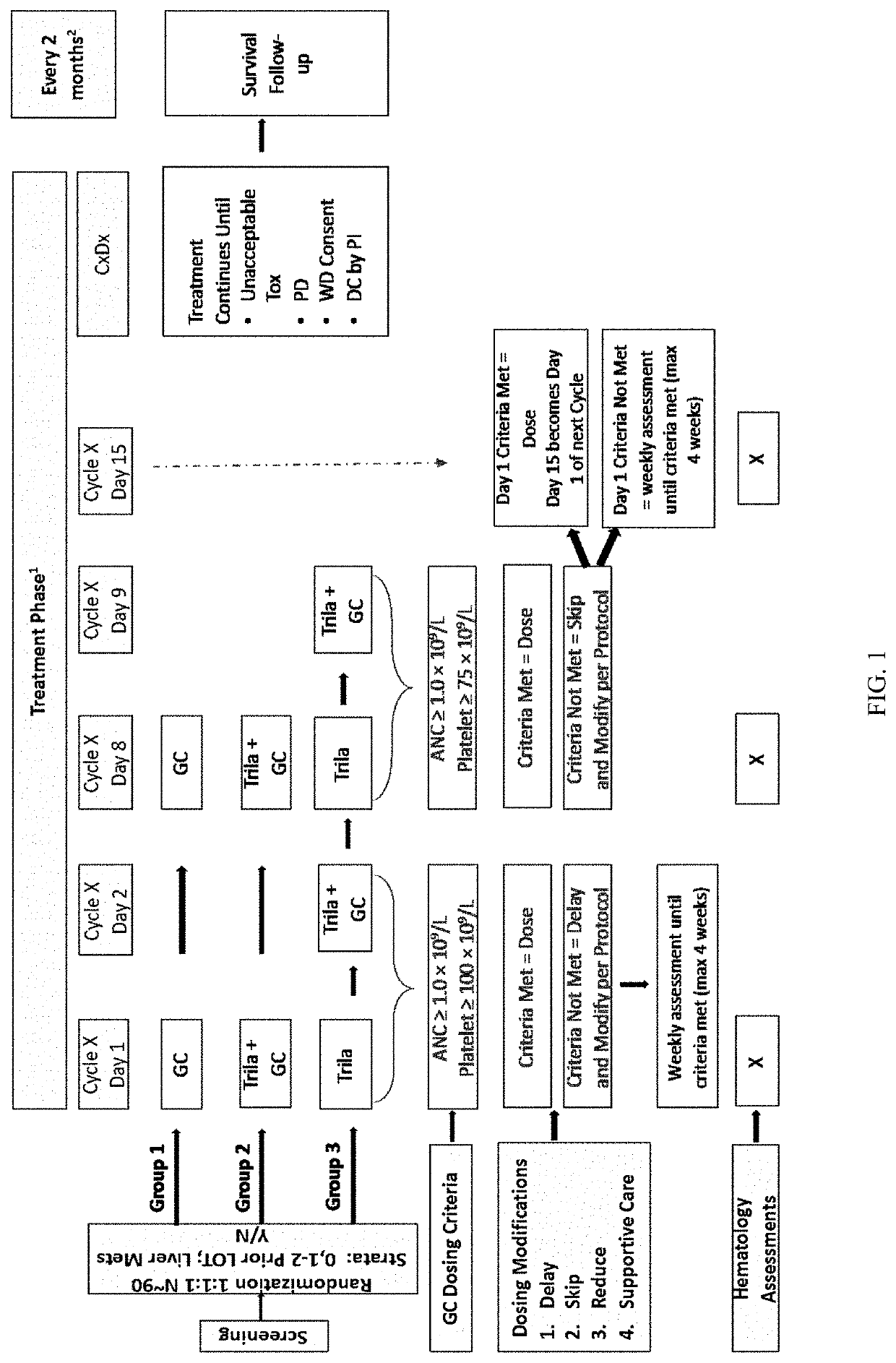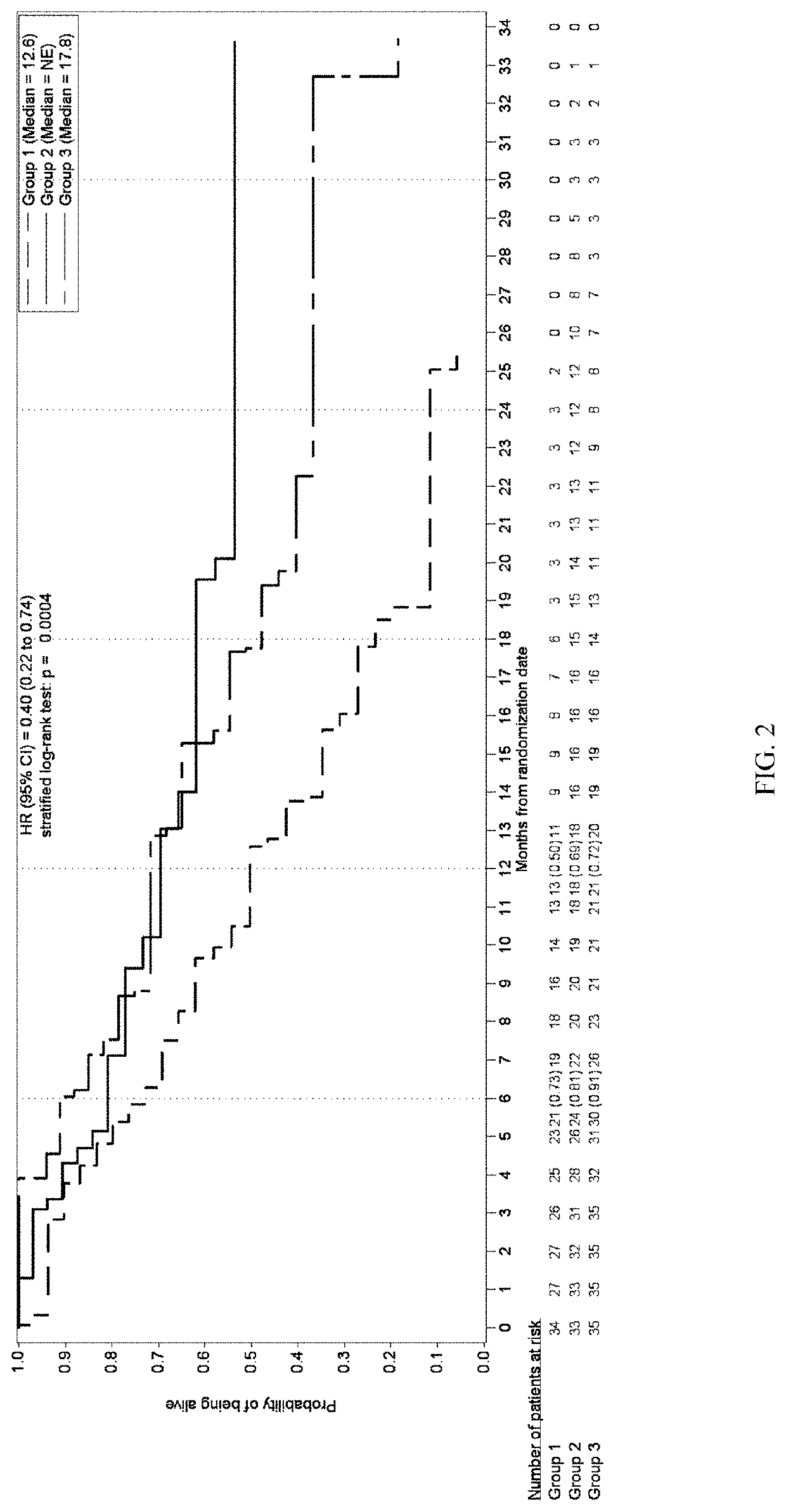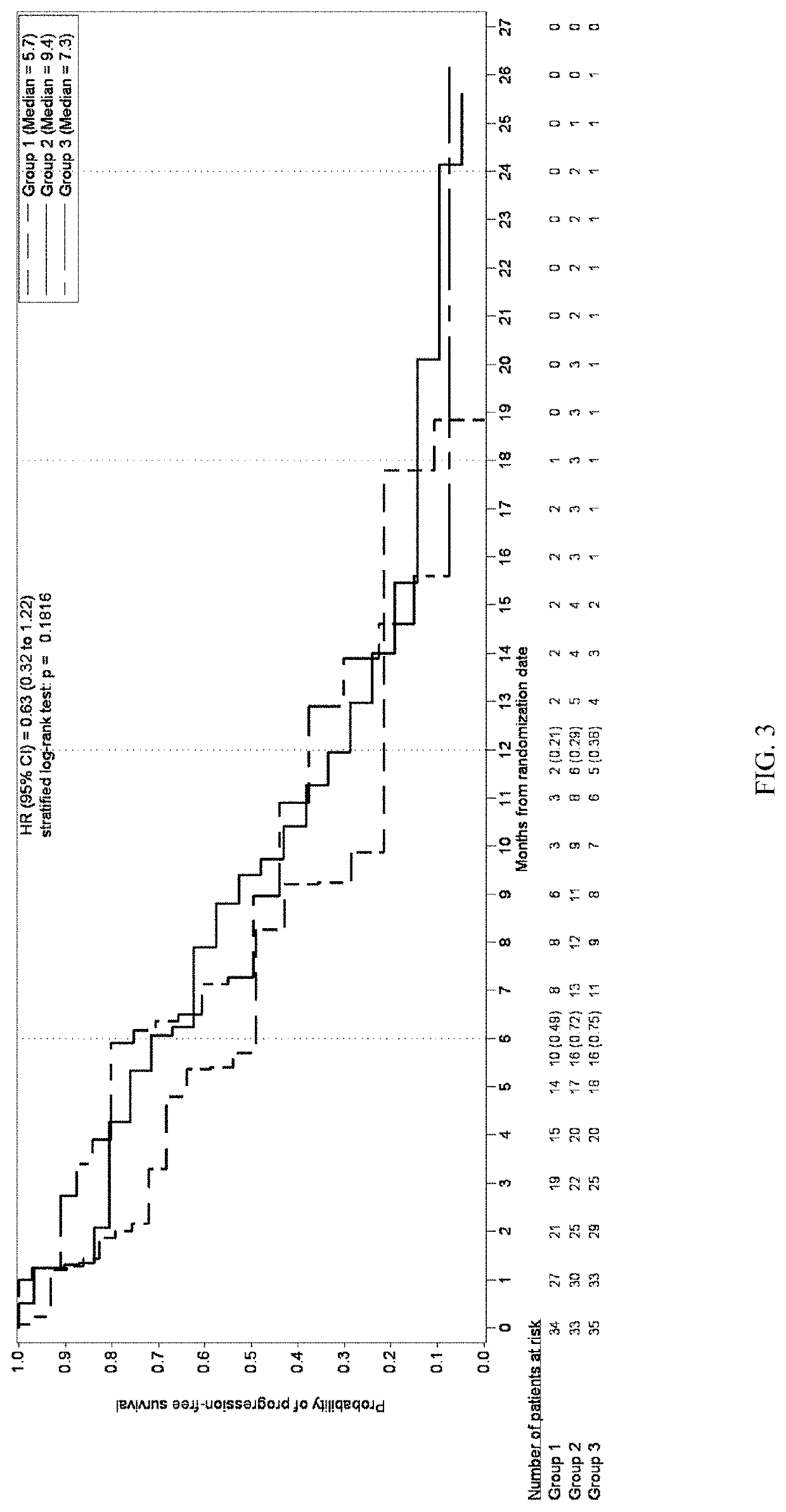Patient selection for enhancement of Anti-tumor immunity in cancer patients
a cancer patient and patient technology, applied in the field of cancer therapy, can solve the problems of difficult to achieve, difficult to achieve, difficult to predict, etc., and achieve the effect of promoting antitumor immunity, enhancing immune activation, and accelerating the recovery of cytotoxic t lymphocytes
- Summary
- Abstract
- Description
- Claims
- Application Information
AI Technical Summary
Benefits of technology
Problems solved by technology
Method used
Image
Examples
embodiments
[0214]The following embodiments are provided herein:[0215]1. A method for selecting a patient or patient population for cancer therapy that includes the administration of a CDK 4 / 6 inhibitor with chemotherapy in a manner that increases the progression free survival or overall survival of the patient comprising:[0216](i) determining if the patient's cancer has a surrounding microenvironment that is favorable to immune modulation;[0217](ii) determining whether the chemotherapy regimen induces an immune-mediated response such as immunogenic cell death, and if both (i) and (ii) are yes, then,[0218](iii) administering an effective amount of a CDK4 / 6 inhibitor selected from Compounds I, II, III, IV, or V, or a pharmaceutically acceptable salt thereof,
[0219]wherein R is C(H)X, NX, C(H)Y, or C(X)2,[0220]where X is straight, branched or cyclic C1 to C5 alkyl group, including methyl, ethyl, propyl, cyclopropyl, isopropyl, butyl, sec-butyl, tert-butyl, isobutyl, cyclobutyl, pentyl, isopentyl, ...
example 1
ib Improves Overall and Progression Free Survival in Human Patients with Metastatic Triple Negative Breast Cancer Receiving Gemcitabine and Carboplatin
[0435]Study Design
[0436]A multicenter, randomized, open-label, Phase 2 study was developed to investigate the safety, tolerability, efficacy, and PK of once daily administration of trilaciclib (IV, 240 mg / m2) in combination with gemcitabine (IV, 1000 mg / m2) plus carboplatin (IV, AUC-2) (G / C) therapy for patients with metastatic TNBC (G1T28-04). Patients are randomly assigned (1:1:1 fashion) to 1 of 3 groups:
Group 1: G / C therapy (Days 1 and 8 of 21-day cycles);
Group 2: G / C therapy (Days 1 and 8) plus trilaciclib administered IV on Days 1 and 8 of 21-day cycles;
Group 3: G / C therapy (Days 2 and 9) plus trilaciclib administered IV on Days 1, 2, 8, and 9 of 21-day cycles;
[0437]Trilaciclib was administered intravenously prior to GC infusion.
[0438]An overview of the study is provided is FIG. 1.
[0439]Adult patients (aged ≥18 years) with evalu...
example 2
une Score Analysis
[0475]Tumor samples from patients participating in the clinical trial described in Example 1 where assayed by Q2 Solutions (Morrisville, N.C.) to determine their Ayers Immune Scores according to Ayers et al., IFN-γ-related mRNA Profile Predicts Clinical Response to PD-1 Blockade, J Clin Invest. 2017127(8)2930-2940. The data was processed using RNA Access, and FPKM normalization prior to log 10 transformation and averaging was performed.
[0476]89 samples were analyzed. The calculated signature score for both the IFN-γ Signature and Expanded Immune Signature were unimodel in distribution, and the median score was used to define the “High” and “Low” categories. FIG. 8A shows the distribution of the Ayers' IFN-γ Signature across the 89 samples tested. FIG. 8B shows the distribution of the Ayers' Expanded Immune Signature across the 89 samples tested.
[0477]Survival and response rates between treatment groups within pre-defined immune response groups were determined using...
PUM
| Property | Measurement | Unit |
|---|---|---|
| concentration | aaaaa | aaaaa |
| concentration | aaaaa | aaaaa |
| resistance | aaaaa | aaaaa |
Abstract
Description
Claims
Application Information
 Login to View More
Login to View More - R&D
- Intellectual Property
- Life Sciences
- Materials
- Tech Scout
- Unparalleled Data Quality
- Higher Quality Content
- 60% Fewer Hallucinations
Browse by: Latest US Patents, China's latest patents, Technical Efficacy Thesaurus, Application Domain, Technology Topic, Popular Technical Reports.
© 2025 PatSnap. All rights reserved.Legal|Privacy policy|Modern Slavery Act Transparency Statement|Sitemap|About US| Contact US: help@patsnap.com



